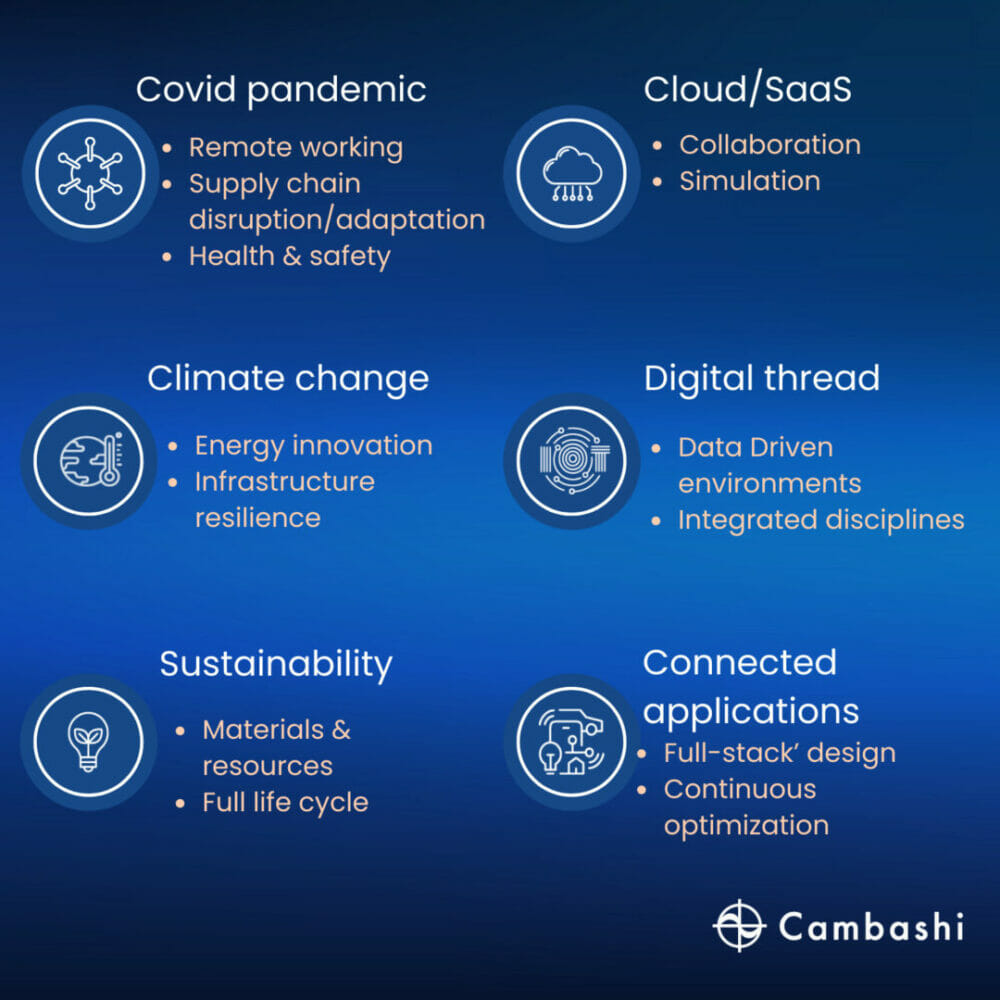Market research from Cambashi, a global leader in research, consulting and training for engineering and industrial software markets, reveals vital macro market drivers in key areas of the engineering software market.
The Covid-19 pandemic, which has led to a change in working practices for most industries, has forced a re-evaluation of supply chains and driven growth in health tech, as well as an understanding of safe public spaces. It has also led to an uplift and changes to the consumption of online entertainment. All of these have a direct impact on the adoption of engineering software applications, including BIM, PLM, CAD/CAM, CAE.
Climate change has reached a new level of awareness. Innovation in the manufacturing, construction and infrastructure industries is critical to achieving targets and can only be reached with the aid of advanced technical applications. Sustainability demands a reassessment of resource consumption and requires a holistic approach to design and optimization throughout the life cycle.
“So, all of these are important investment factors that will drive future growth in all segments of engineering software”, said Simon Hailstone, Director of Research, Cambashi. “There are also a number of key technology areas that are helping to drive innovation and adoption in key areas of the engineering software market.”
Cloud and SaaS received a boost as a result of the Covid-19 pandemic. Most providers are actively pursuing developments in this area. Although it is not straightforward to determine the total proportion of the TAM allocated to these solutions, estimates indicate it is still quite low.
The notion of Digital thread has gained significant traction as the advantages of connecting disciplines and applications to support whole-life view of products and infrastructure are realised, with provider ecosystems emerging as a result. Cloud/SaaS is also helping fuel new entrants, providing specialist applications or new user workflows.
Connected applications, of which industrial IoT is a part, are bringing together multiple sectors, requiring new forms of modelling, data management and the incorporation of technologies, such as AI. Complex ecosystems are emerging and we expect to see the overlap of technologies driving further M&A activity within an already active market.
For more information visit www.cambashi.com.








